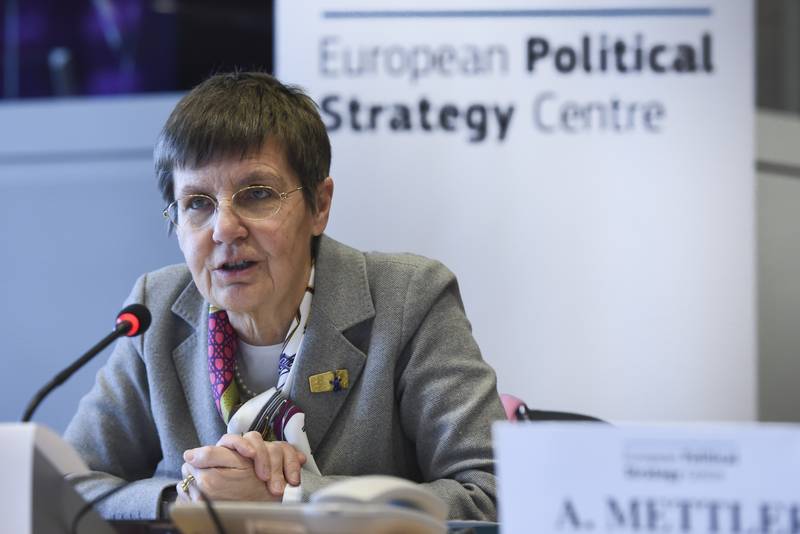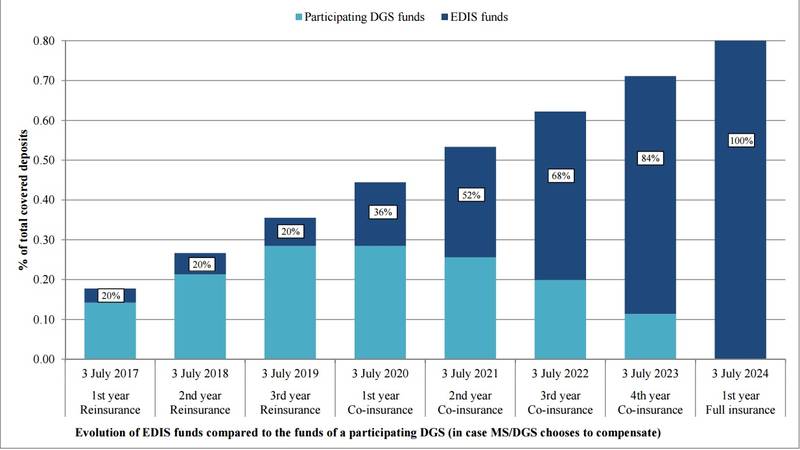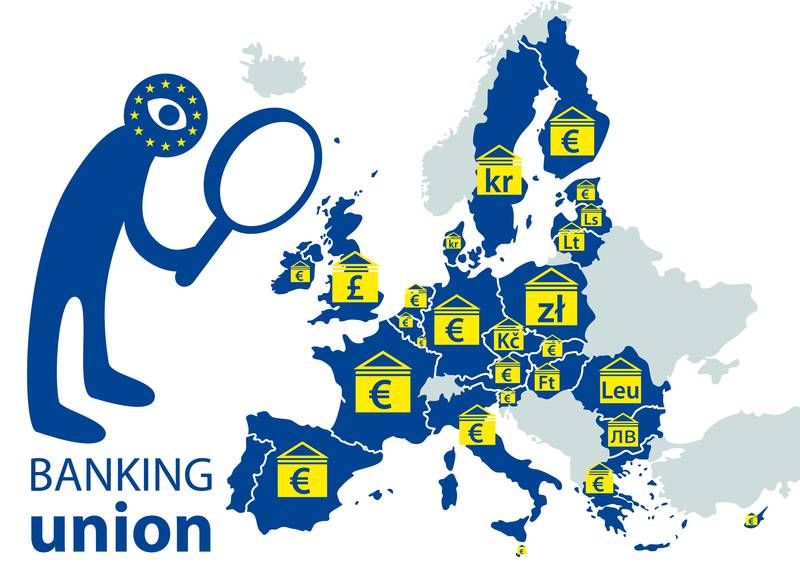For and Against a Common Eurozone Budget
Adelina Marini, January 17, 2013
 One of the reasons why many analysts, politicians and decision-makers consider the EU summit in December a disappointment is that it gave away ambition. One of the most ambitious proposals that could be found in the drafts for the future of the EU and the euro area in particular of the Four Presidents (of the European Council, the ECB, the Commission and the Eurogroup) and separately of Jose Manuel Barroso, was the creation of a common eurozone budget, called in the draft documents a 'fiscal capacity' for absorbing shocks. The idea in the report of the Four Presidents, presented by Herman Van Rompuy a week before the December European Council, is much more contained and therefore more realistic than Jose Manuel Barroso's ideas in his blueprint, presented in the end of November.
One of the reasons why many analysts, politicians and decision-makers consider the EU summit in December a disappointment is that it gave away ambition. One of the most ambitious proposals that could be found in the drafts for the future of the EU and the euro area in particular of the Four Presidents (of the European Council, the ECB, the Commission and the Eurogroup) and separately of Jose Manuel Barroso, was the creation of a common eurozone budget, called in the draft documents a 'fiscal capacity' for absorbing shocks. The idea in the report of the Four Presidents, presented by Herman Van Rompuy a week before the December European Council, is much more contained and therefore more realistic than Jose Manuel Barroso's ideas in his blueprint, presented in the end of November.
In the report, it was envisaged work on the fiscal capacity to begin in 2014 and to function as a budget or a fund that will absorb specific national shocks through a system of insurances. The capacity can be used, for instance, in cases of excessive unemployment as is the current situation in the EU. Alas, the leaders decided on December 13th that at this stage there is no need such an idea to be discussed. But as the roots of the problems in the eurozone and the incapability of its current architecture to solve them will continue to create the need of mechanisms like the fiscal capacity, it would be a bit hasty to throw away that idea entirely. And not a few think-tanks are deliberating quite in depth on it. I will draw your attention to two of the most popular analytical centres in Europe - the economic think-tank Bruegel and the Centre for European Policy Studies (CEPS).
Bruegel: without a common budget the eurozone cannot function
The Bruegel's analysis is very thorough and is made by Guntram B. Wolff, deputy  director of the think tank. Mr Wolff worked at the European Commission on the macroeconomics of the euro area, he was an economist in Deutsche Bank and an adviser in the International Monetary Fund. He uses as a basis of his analysis, as many other experts do in that area, comparisons with the federal system in the US. He acknowledges that the European Union is different in many aspects pointing out that in the first place the EU budget is very small in terms of the overall size of the economy (a little over 1% of gross national income). He points out, though, that in most cases the federal budgets are used for stabilisation, which is precisely what is needed in the case of the Economic and Monetary Union (EMU). According to empirical studies, more than 40% of the economic shocks are absorbed by the capital markets, some 25% by the credit markets and only 10-20 per cent by the federal budget.
director of the think tank. Mr Wolff worked at the European Commission on the macroeconomics of the euro area, he was an economist in Deutsche Bank and an adviser in the International Monetary Fund. He uses as a basis of his analysis, as many other experts do in that area, comparisons with the federal system in the US. He acknowledges that the European Union is different in many aspects pointing out that in the first place the EU budget is very small in terms of the overall size of the economy (a little over 1% of gross national income). He points out, though, that in most cases the federal budgets are used for stabilisation, which is precisely what is needed in the case of the Economic and Monetary Union (EMU). According to empirical studies, more than 40% of the economic shocks are absorbed by the capital markets, some 25% by the credit markets and only 10-20 per cent by the federal budget.
One of the main goals of the ideas for a common budget of the eurozone is to break the vicious circle between banks and taxpayers - a goal, set in the EU conclusions from June 29th, 2012, from which, however, there can be observed a retreat and only the first pillar of that goal is put in place - the common banking supervision. Guntram Wolff underscores that government debt is not the only driver of interest rates on sovereign bonds. External debt in general is much more powerful because the overall indebtedness of the economy has a greater significance for the capability of governments to use fiscal policy as a tool to absorb shocks with strong magnitude as unsustainable private debt often turns into sovereign debt. The creation of a banking union in the EU could unclog the credit channel, thus leading to stabilisation.
The initial idea of the Maastricht Treaty which establishes the EU single currency is fiscal stabilisation to be achieved only on national level. The assumption was that governments would be capable to borrow from the market in order to calm national shocks down. A federal transfer system was not envisaged so fiscal risk sharing was not envisaged, the analyst recalls. It was assumed that the credit market would work to ensure a sufficient level of risk sharing. A limit of 3% of the budget deficit was set because it was believed that this would be a sufficient automatic stabiliser to address possible shocks.
The problem is, however, that credit markets often retreat from regions that have huge external debt and it is those regions that are most at risk of deep recessions as a result of the significant money retreat. The attempts for adjustment on a domestic (national) level usually lead to increasing indebtedness of the entire economy as the experience in the eurozone shows. In general, regional governments (in that particular case the national governments of the member states are taken into account) are incapable of providing an efficient fiscal response to big and deep recessions because of the unwillingness of investors to finance external debt. Thus, national fiscal policy becomes dysfunctional. By definition, the author recalls, monetary policy cannot deal with deep recessions which are purely regional.
In his analysis, Guntram Wolff dwells on another interesting element of the developments in the eurozone crisis, which is a situation where there is a shock simultaneously in all the regional economies of the "federation", addressed by the regional (national) governments. The effort, however, is doomed to failure mainly because the member states restrict as much as possible their participation hoping their neighbours will respond with more. This can be prevented via strong mechanisms for coordination. The economist is convinced that regional fiscal policy has a weaker impact than centrally provided stimuli.
In other words, a monetary union such as the eurozone needs a common budget in order to provide temporary, but significant, transfer of resources in case of big regional shocks to the most affected regions; to have an instrument for counteraction of severe recessions in the eurozone as a whole when monetary policy is not that strong and fiscal policy is more appropriate; and to provide public goods for the zone as a whole.
Guntram Wolff reviews several options for provision of assistance through a shocks absorption function, pointing the risks as well. For example, support for countries affected by asymmetric business cycle shocks should be used to boost structural changes. Usually, assistance is prolonged or stops the adjustments of shocks. That is why it is important to demand the funds to be allocated in exchange for changes as is currently being done with the troubled countries, provided with assistance by the bailout funds of the eurozone.
Mr Wolff believes that this will be a huge challenge pointing for instance to the ongoing dependence of some regions on assistance in existing federations like Italy, Germany, Belgium and others. Greece received huge transfers from the EU ever since it is a member of the Union from 1981, but structural reforms have not been implemented entirely and that led to the loss of competitiveness and to current account deficits, which for their part led to the culmination of the Greek crisis in April 2010. So, to apply a structural adjustment a closer link between the eurozone budget and structural reforms is needed.
A type of shocks that could be dealt with by a eurozone budget is unemployment insurance systems, as is mentioned in the Four Presidents' report. That, however, bears huge risks, according to Guntram Wolff. In general, he explains, the unemployment insurance systems do not have significant impact macro-economically to absorb regional shocks. Besides, the creation of a common insurance system for unemployment will be a very difficult task mainly because the big differences between the labour market institutions of the member states. They defer significantly in terms of labour market regulation and institutions which will have significant implications on the duration and type of unemployment. A common scheme could motivate countries to adjust their labour market in such a way to maximise their benefits from the common resources.
Another type of shocks is business cycle. What can be done is to supplement the Stability and Growth Pact, which currently is centred around budgetary balance, with a system for financial support based on business cycle. The countries whose output is significantly below potential could be allowed to have deficits with the help of common resources. In general, the Commission could take the task to define the output potential and the size of assistance on the basis of clear rules. A deficiency of that idea is, as in the excessive deficit procedure, that potential output is a concept that is attractive in theory but quite controversial in practise. Linking payments for countries with unobservable variable is at least as controversial as defining fiscal consolidation on the same basis. Besides, it will be difficult to control how transfers are spent.
The third element Guntram Wolff dwells upon is often discussed in the context of the eurozone crisis. It is the huge spreads - the deviations of interest rates between member states. An issue of which spoke Austria's Chancellor during a debate in the European Parliament recently. The eurozone common budget could be used to compensate the large spreads. For instance, an option could be considered for automatic payments of 50% of the spread compared to the average interest rate. In this way, a country with an interest rate of 6%, given the average rate is 3%, could get 1.5%*60% or 0.9% of GDP in the form of a transfer. The countries whose rates are below the average will pay into the system, thus reducing their benefits from being a safe haven.
In this way, the problem will be approached directly in countries that are thrown out of the market during big shocks. In the same time, however, the pressure for consolidation of public finances and reduction of debt must remain strong. A shortcoming here is that this could lead to permanent transfers which is mentioned as impossible in Van Rompuy's report. Apart from that is raised the issue whether politics should define interest rates or the market should be left to work freely instead. The analyst quotes in support of that approach what the European Central Bank is already doing through its outright monetary transactions operation (OMT). In practise the same can be done through the common budget because this would reduce the gains the benchmark Deutsche Bund enjoys.
Beyond the purely theoretical issues about what should the common budget look like and what problems should it address, is the simpler and more pragmatic question - how big should the budget be. Guntram Wolff suggests that stabilisation of regional shocks would require circa 1 per cent of gross domestic product of the eurozone. If to this is added another 1 per cent of revenues should be more than enough to ensure stabilisation and the necessary borrowing in case of a big banking crisis. In other words, around 2% of GDP would be sufficient.
The conclusion of the economist is that the creation of a fiscal capacity is essential for the euro area, as Wolff even believes that it should not remain closed for the non-euro countries which are obliged or are in a process of joining the single currency. According to him, the countries that are pegged to the euro (like Bulgaria for example) and those who are in the mechanism for preparation for membership (ERM II) are more than recommended to participate. The functioning of the EMU could improve significantly through a more ambitious European fiscal union that would consist of strict rules for borrowing on national level, centrally defined deficit for the eurozone as a whole and decisions taken on a central level for the distribution of the deficit throughout the euro area. That would allow for the creation of federal eurodebt, is the opinion of Guntram Wolff.
The false promise of a eurozone budget
 This is how is titled the brief comment of Daniel Gros. He is a director of the Centre for European Policy Studies and is an economist too. He also worked as adviser in the International Monetary Fund and the European Commission. He rejects using the American federal model when discussing risk sharing in the euro area as a basis because, he points out, that is misleading. In the US the unemployment insurance, for instance, is organised on a state level. The federal government interferes only in cases of big nation-wide recession and provides some additional benefits for the long-term employed. That support, however, is allocated to all states, so a conclusion to what extent does this help the most affected is difficult to make.
This is how is titled the brief comment of Daniel Gros. He is a director of the Centre for European Policy Studies and is an economist too. He also worked as adviser in the International Monetary Fund and the European Commission. He rejects using the American federal model when discussing risk sharing in the euro area as a basis because, he points out, that is misleading. In the US the unemployment insurance, for instance, is organised on a state level. The federal government interferes only in cases of big nation-wide recession and provides some additional benefits for the long-term employed. That support, however, is allocated to all states, so a conclusion to what extent does this help the most affected is difficult to make.
Daniel Gros quotes Spain to explain where in fact is rooted the problem when it comes to unemployment. The level of unemployment in Spain is nearing 30 per cent, which in general is a sufficient justification for the creation of some form of a shock absorber. The Spanish unemployment, however, the economist explains, has always been relatively higher than the eurozone average and registered a drop to single-digit levels only once as a result of the construction bubble. Any common scheme for unemployment in the euro area will create the risk of financing long-term unemployment created by unreformed national institutions which for decades have appeared absolutely insusceptible to reforms.
The analyst points out, however, that there is an example which can be taken from the US. According to him, one of the reasons why the global financial crisis did not lead to regional banking crises in the US is that the American "banking union" provides real guarantees against local financial shocks. So, for example, the local real estate bubble in the state of Nevada was as severe as in Spain or Ireland. But in Nevada, which is commensurate to Ireland, the losses of the local banking system were absorbed to a large extent by the institutions of the American "banking union" - more specifically the Federal Deposit Insurance Corporation and the federal agencies for mortgage re-financing Fannie Mae and Freddie Mac. It is believed that the support for Nevada was 10-20% of its "national" income, which entirely fits into Ireland's effort. Daniel Gros claims that Ireland would have been in much a better shape had it received such a transfer.
Mr Gros's conclusion is simple, as he puts it himself: The euro’s long-term stability depends far more on completing the plans for a European banking union than it does on creating some new budget for the eurozone. The problem is, however, that this too is losing ambition, judging from the attitudes in Europe at the moment, but this will be very clear on January 21st, when the first meeting of the Eurogroup will take place, during which one of the main elements of the banking union - to allow the European Stability Mechanism (ESM) to directly recapitalise banks - will be discussed for the first time this year.
 Klaus Regling | © Council of the EU
Klaus Regling | © Council of the EU Mario Centeno | © Council of the EU
Mario Centeno | © Council of the EU Mario Centeno | © Council of the EU
Mario Centeno | © Council of the EU Elke Koenig | © European Commission
Elke Koenig | © European Commission | © European Commission
| © European Commission | © European Parliament
| © European Parliament